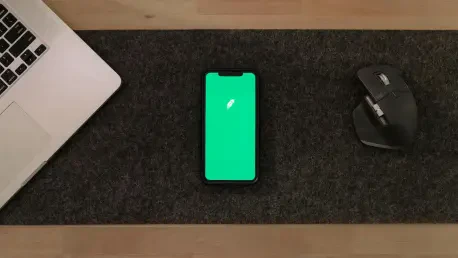In the span of advancements from iOS 18 to iOS 26, Apple’s Reminders app has undergone a significant transformation, not merely in aesthetics but also in improved usability and functionality. The application, initially designed to offer a simple yet effective reminder system, has been refined through various iterations to align with Apple’s commitment to intelligent user experiences. Amidst these changes, key enhancements such as the integration of Apple Intelligence and the adoption of a new “Liquid Glass” aesthetic signify Apple’s intention to seamlessly blend advanced technology with everyday practical use. Despite the numerous refinements, the core function of helping users manage tasks more effectively has remained steadfast, ensuring that the essence of the Reminders app continues to cater to the needs of its users while benefiting from modern innovations.
Visual Enhancements and Aesthetic Overhaul
One of the most striking changes to the Reminders app in iOS 26 is the implementation of the “Liquid Glass” aesthetic, which introduces a visually captivating interface with a modern touch. Unlike its predecessor iOS 18, which maintained a more traditional look, iOS 26 infuses sophistication into the app’s appearance, creating an environment that is both aesthetically pleasing and user-friendly. The app’s color scheme has been reimagined, with an emphasis on dynamic colored segments, resulting in a cohesive and elegant experience that contrasts with the previous emphasis on a muted white palette. This design choice not only enhances visual appeal but also improves navigability, providing users a seamless and intuitive experience as they interact with their lists and reminders.
Additionally, the markup of increased whitespace in the interface significantly contributes to the app’s user experience by making navigation more intuitive and straightforward. Increased spacing between elements ensures that users can easily locate and manage their lists, reducing clutter and improving focus. This structural refinement aligns with Apple’s broader design ethos of creating interfaces that are unobtrusive yet efficient, maximizing user engagement without compromising aesthetic quality. While these changes are subtle, they collectively result in a significant improvement in user satisfaction, aligning visual design with the intuitive interaction that has become synonymous with Apple’s branding.
Functional Adjustments and User Interface Improvements
The shift from iOS 18 to iOS 26 has also seen substantial changes in user interface elements and functional adjustments that have enhanced interaction with the Reminders app. Previously, iOS 18 relied heavily on text-based navigation, which, while effective, did not fully capitalize on the potential for symbolism and iconography to enhance usability. The introduction of the Liquid Glass lozenge in iOS 26 brings icon-based navigation to the forefront, simplifying task creation and list management while retaining an aesthetically refined touch. Despite the potential learning curve for users unfamiliar with icon-driven interfaces, this clean, minimalistic approach offers an elegant solution to function access, enabling faster and more efficient task management.
Beneath these visual interpretations lies a largely unchanged logical structure, attesting to the robustness of the initial app’s design. However, iOS 26 introduces more immediate data entry features, which streamline the process of entering reminders, reducing unnecessary steps and capitalizing on the structural logic established by previous iterations. Such improvements enhance the user experience by eliminating redundancy while maintaining familiarity, allowing users to engage with the app effortlessly. These thoughtful adjustments marry form and functionality to provide a compelling user experience that is respectful of historical design while firmly rooted in modern usability principles.
Apple Intelligence Integration and Its Impact
The integration of Apple Intelligence has marked a significant leap forward in making the Reminders app a more perceptive and efficient tool for users. In iOS 26, Apple Intelligence seamlessly provides enhancements such as the ability to automatically categorize list items. This smart categorization feature allows for lists to be organized logically with minimal user input, efficiently categorizing items such as groceries by type, paving the way for more organized task management. Such automated organization reduces the cognitive load on users, offering a smart solution that preprocesses data, saving time and effort.
Moreover, the role of Apple Intelligence extends beyond categorization. By analyzing user behavior and data within the phone—such as emails and calendar entries—it offers intelligent suggestions that are contextually relevant. This proactive assistance means that the app can recommend tasks, lists, or follow-ups, enhancing its functionality as a predictive tool. This added layer of intelligence transforms what was once a passive utility into a dynamic assistant, anticipating user needs and suggesting actionable tasks that align with ongoing activities and commitments. The enhancement points to a nuanced understanding of user habits, marking an innovative step towards an era of proactive digital assistance.
Overall Trends and Strategic Directions
Examining the changes from iOS 18 to iOS 26, a discernible trend emerges toward an increasingly intelligent, user-friendly application environment. Apple’s strategy of embedding AI capabilities within its applications reflects a broader industry trend toward smart, interconnected user experiences. By introducing incremental enhancements rather than radical changes, the Reminders app subtly evolves with its users, ensuring that improvements do not overwhelm but rather complement existing functionalities. This thoughtful evolution demonstrates Apple’s strategic focus on refining rather than redefining, marking an intersection of technological prowess and user-centric design in the digital landscape.
These changes underscore a growing consensus that app functionalities should not only meet current demands but also anticipate future needs, adapting to the user’s lifestyle and work habits. Apple’s incremental approach reflects an enduring commitment to excellence in design and utility, ensuring its applications consistently offer better productivity tools. The integration of advanced features underscores a commitment to providing comprehensive solutions that extend beyond mere task listing, offering holistic management capabilities that align with dynamic user environments. This approach secures Apple’s role as a leader in facilitating seamless, sophisticated, and efficient user experiences in the digital product ecosystem.
Continuous Evolution and Future Considerations
The Reminders app in iOS 26 introduces a major design shift with the “Liquid Glass” aesthetic, a sleek update from the traditional look in iOS 18. This new design brings a modern, sophisticated feel to the app, enhancing both its visual appeal and functionality. The color scheme has been refreshed to include dynamic colored segments, replacing the previous muted white palette. This change not only makes the app look more elegant but also improves the overall user experience by making navigation seamless and intuitive. Users will find it easier to interact with their lists and reminders due to this sophisticated design.
Another significant update is the increased whitespace within the interface. This change plays a crucial role in enhancing user experience by promoting more intuitive and straightforward navigation. With more space between elements, users can easily manage their lists, reducing visual clutter and improving their focus. These subtle yet impactful design elements reflect Apple’s commitment to creating user-friendly interfaces that are both efficient and aesthetically pleasing, ensuring that user satisfaction is aligned with Apple’s innovative standards.









